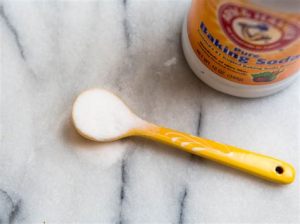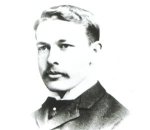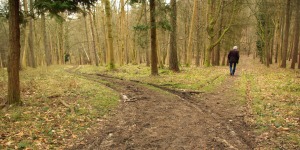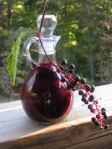Hello again. While I went through various personal crises, we fell into the time of cholera. Er, I mean, kung flu. Er, I mean virus COVID-19. Ugh. So, being an herbalist, I devised a protocol for myself that I have used preventively. A number of plants are anti-viral, including poke berries. I used what was to hand: lemon balm and elderberry. Elderberry comes with immune-strengthening zinc in candy-like lozenges, and lemon balm comes as a tea. I not only drank a fair amount of this tea, but I also inhaled it. I took the pot with strong lemon balm tea that was boiled and let sit 5 minutes, then I sat down over the pot with a towel over my head, breathing in the hot vapor. Adjusting the towel permits one to regulate the heat.
In addition, I took vitamin D3, and exposed myself to sun every day, and eventually got tested for D. My levels are normal, but some years back I was deficient. In sunny Colorado. One never knows until they run the test. I also put in a good supply of colloidal silver in case I got ill. I did not. And I used 3% hydrogen peroxide as disinfectant, as I have for years. Cheap and safe. Comes in a spray bottle too.
I learned inhalation from my grandmother, who also believed in sweating illnesses out. Apparently, some viruses are vulnerable to heat, and her methods worked. Frankly, it never made sense to me to focus on vaccines when it comes to fast-mutating viruses like the flu and cold. By the time midwinter arrives, the virus has mutated. Why all the hoopla each year with the vaccines?
Anyway, when COVID-19 came, I appreciated the greater emphasis on public hygiene. Other than that, a lot of what’s in the news seems untrustworthy. Even the stats, it turns out, are being messed with. Pathetic. Our body politic is infected by liars.
Well, as states and countries begin to reopen, and people worry about the virus coming back in the fall, I happened to come across a recipe that anybody who begins to show symptoms or wants to be proactive can use at home. It is being passed around by group emails in the Czech Republic and Slovakia. What follows is my translation of this letter received by a Czech couple who run an alternative medicine website. For some reason, the pdf file in which they published the letter is nearly unfindable in Czech, and completely unfindable in English. I have therefore decided to translate the letter from its Czech translation. I contacted the folks who run the site but they were unable to link to the original – they claim the doctor (who I assume is Russian) who wrote it sent it as an old-fashioned letter. Without further ado, here it is:
To virologists and people of the planet:
At present, the minds of people the world over are full of the COVID 19 pandemic. People aren’t fully alive, they live in fear. They fear that they’ll catch the viral newcomer and die. Where are the great discoveries of the 21st century, dear virologists, that can protect people from this disaster? Certainly, your accomplishments are hard to praise. It is said that you have enabled clinicians to test for the presence of the virus in the pharynx. There is a race on regarding the number of tests performed. But why test? Yes, the test will show if a person is indeed infected by the coronavirus, And then? You don’t know how to cure it; there is no medication or a vaccine, and it is not known when such will become available. And while the vaccine is being readied, a new mutant will appear, for which the vaccine will not be applicable. And you will be helpless while the virus within the patient moves from the pharynx without obstacles to the lower airways, to the lung cells, causing pneumonia and lung cell necrosis.
But the pandemic will burn itself out one way or another, at the price of millions of lives. Then suddenly a second, fifth, tenth “wave”? Again a pandemic, again quarantines, thus permanent damage to world economy, and people without work, hungry, etc.
The great Einstein once said: “The real inventions are made by ignoramuses.” I am an ignoramus in virology. But I have been directly involved with medicine. I am Gennady Vasilyevich Yudin, MD, a transplant specialist, and the recipient of a USSR merit award. I headed two medical departments at a medical school for 30 years. I have thousands of former students. And I began to feel shame that I, a researcher and professor, cannot help my once students, now doctors, who are dying along with their patients. I decided to open up what remains of my old man’s brain, and came up with an article “Mode of prevention and treatment of coronaviral illness in its early stage by destroying the virus in nasopharynx via high temperature.” Because I am cognizant of patents, I have formulated the discovery for publication. That’s the scientific way. [The letter does not show whether or where this article was published, or how a patent would apply. Something may have been lost in the original translation.]
The virus is new. Medical literature is entirely lacking; therefore, I used facts located on the internet. COVID 19 is an RNK molecule covered by a lipid (fatty) membrane. It is killed by 60-degree heat [Celsius] in 10 minutes. It infiltrates the human organism during the first 4-6 days through the air via tiny droplets. The viruses are then found in oral saliva and the phlegm of the pharynx from where samples are taken for diagnostic testing. While breathing in, the viruses travel downward through the airways and into alveolar cells which they need for continued survival. This then leads to lung inflammation and later to lung necrosis. I suggest killing and inactivating viruses, before they reach lung cells, by the application of 80-90 degree heat, while dissolving their lipid membrane by soda [sodium bicarbonate].
The procedure is as follows. An infectious disease physician, who is in contact all day with patients infected by COVID 19, comes home, washes his hands with good soap, then pours 1 liter of tap water into the teamaker, adds 1 tablespoon of baking soda, and brings the solution to a boil. Then the doctor leans over the pot, breathing the hot vapor in through the nose and the mouth for 15 minutes. It is clear that this procedure is accessible to anyone, inactivating all viruses that managed to enter the mouth and the pharynx. The soda dissolves the lipid membrane of the virus, and the hot vapor cooks the naked viruses in the saliva and phlegm. If doubt remains, the procedure can be repeated without causing the human organism any harm. My confessor Father Vadim underwent this procedure and found it actually pleasant.
During the night of 16th and 17th of March this year, when the news about the pandemic was just beginning to spread, I woke with a heavy chest, unable to take a deep breath. In the morning I dressed and headed for the pharmacy (about 500 meters). I was so winded that I had to stop about five times, there and back. This was accompanied by a dry, difficult cough. There was no runny nose, elevated temperature or headache. When I came home, I did not hesitate and applied the familiar soda inhalation, repeating it in the afternoon and at night. My condition was by then distinctly improved. The next day, I repeated the inhalation three times. That night, the symptoms disappeared and I could forget all about the unpleasantness.
Why did I apply this procedure so readily? In our village, Orlovshchina, it was common to treat cold-related illnesses of children and adults by such inhalation, using potato water instead. Later my illiterate grandmother Pasha learned the soda method from the family where she was a servant, and it became our family tradition, by now more than a hundred years old. Later, when I began to think it through, I realized that I must have been infected with COVID 19 which I cured by repeated inhalations of hot water and soda vapor in the very early stage of the illness, feeling back to normal after 2 days. As a confirmation, I can offer the case of my retired niece, who turned to me for advice when she experienced similar symptoms, and she also became well after two days. Of course, two anecdotes are no proof, but I remain deeply convinced that it makes sense to prevent the disease before the symptoms even appear. I understand the beneficial influence of baking soda.
Because there is no analogy to my method, I cannot compare it with other approaches to cure. Therefore, I will immediately go to enumerating the expected benefits: 1. The method definitely prevents coronavirus illness by inactivation brought about by higher temperatures of mouth and pharynx. 2. The method is science-based, inexpensive, simple, and can be applied by anyone in the home. 3. The method provides a future perspective, because it is likely to kill each mutant, if it’s analogous to COVID 19. 4. The world will not be threatened by repeated waves of this illness, because with such broadly applied prevention the problem of COVID 19 will be solved.
I appeal to all people of the world! When you receive this information, do not delay and inhale hot water and soda vapor for 15 minutes. Repeat if needed. I ask for no money. I would have to pass such money on to the Soviet government which gave me the great fortune to meet, during half a century, some of the most beautiful, talented, smart, well-read, noble, spiritual, communicative, cheerful and well-organized students of IGMI-IvGMA [school acronyms]! The university celebrates 90 years this year. To this university I dedicate my discovery. I wish good health to all!
May 1, 2020 in Ivanovo, professor G. Yudin, translated May 15th by Libuše Bělousová
Whew. That was longer that I thought. I have no idea if this Dr. Yudin actually exists, but it seems to me a reasonable, simple, and well-worth-trying method regardless of who thought it up. (If anyone knows which university the letter refers to, I would be happy to correct the text.) It would be nice to stop worrying about the flu and move on to better things. So pass it on.
Now, I am off to inhale. Cheers.
Postscript: I began to wonder if the doctor meant leaning over a boiling pot. I discovered that this is impossible to endure. He must have meant leaning over the pot with a towel over one’s head, as I was taught to do. I have done this twice so far. I am not sure how hot the vapor really is, but I would guess at least 60 degrees Celsius for sure. I put the covered pot between my legs on a towel as I sit in a chair, take the cover off, and throw a towel over my head. As the pot cools, one needs to bend further down, and tuck in the towel more tightly. (Caution: hang onto the pot handle so it does not spill hot water out. And take care not to drop towel edges into the hot water.)
I have to say that even though I have not been ill, my breathing becomes easier after the procedure and my chronic postnasal drip eases off. I wish I had one of those oxygen meters nurses put on your finger while they are taking your blood pressure. I am curious if it clears the lungs and enables the body to absorb oxygen more readily.
Secondly, I realized after doing the translation that the doctor is really telling us all to do this at least once or twice because by now, many people are likely to be asymptomatic carriers. What’s to lose?

















